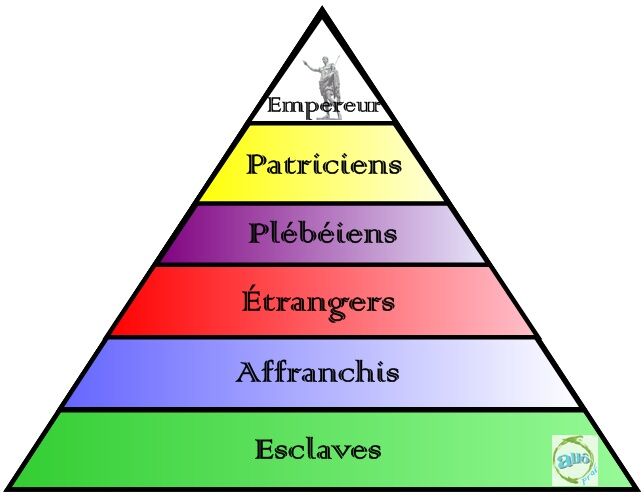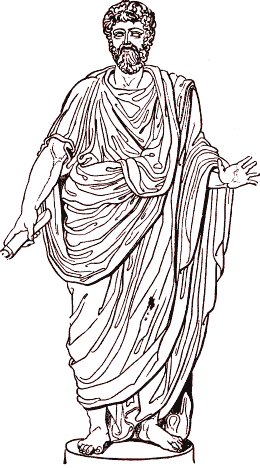The concepts covered in this factsheet go beyond those seen in secondary school. It is intended as a supplement for those who are curious to find out more.
Roman society was divided into several large groups:
- patricians: wealthy landowners, descendants of noble families, knights and high-ranking political advisors;
- plebeians: poorer citizens such as craftsmen, peasants and merchants;
- foreigners or peregrines: free people from territories conquered by Rome. They could obtain Roman citizenship;
- freedmen: Former slaves who had won their freedom;
- Slaves: Very numerous in Roman society, they were mainly employed in agricultural work or as domestic servants in the homes of free citizens. Slaves had no rights.

The major social groups in Roman society
Note: English image coming soon
Roman women had rights and influenced society (in politics and business), but they did not have the status of citizens. They remained dependent on their fathers, and then on their husbands.
The emperor, patricians and plebeians were Roman citizens, while foreigners, freedmen, slaves and women were non-citizens.

The toga, the distinctive attire of Roman men
All Roman citizens had to abide by the Law of the Twelve Tables (a text of the law engraved in bronze or marble and placed in several copies in public places). The free men of the countries conquered by the Roman army were called peregrines. They were free, but could not vote. To become Roman citizens, they had to buy their citizenship or complete 25 years' military service in the Roman army.